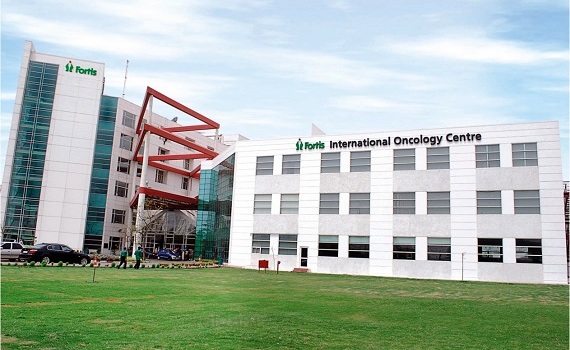Spine Detethering surgery Treatment in India
treatment
starting from
Introduction:
Spine detethering surgery is a specialised neurosurgical procedure performed to release or untether the spinal cord from surrounding tissues or structures. Tethered spinal cord syndrome occurs when the spinal cord becomes abnormally attached or fixed to nearby tissues, leading to tension and compression. This condition can cause a range of neurological symptoms and impairments. Spine detethering surgery aims to alleviate the tension on the spinal cord, prevent further neurological damage, and improve or stabilise the patient's condition. In this article, we will explore the symptoms, causes, diagnosis, treatment options, the cost of spine detethering surgery in India, and conclude with its significance in neurosurgical care.
Symptoms:
The symptoms of tethered spinal cord syndrome can vary depending on the location and severity of the tethering. Common symptoms include:
1.Back pain or discomfort: Pain may worsen with physical activity or certain positions.
2.Leg weakness or numbness: Weakness may affect one or both legs and may lead to difficulty walking or standing.
3.Bladder and bowel dysfunction: Incontinence or difficulty emptying the bladder or bowels.
4.Scoliosis: Abnormal curvature of the spine.
5.Foot deformities: Changes in the shape or position of the feet.
6.Changes in skin sensation: Altered sensation or loss of sensation in the lower extremities.
Causes:
The exact cause of tethered spinal cord syndrome can vary. It may be present at birth (congenital) or develop later in life due to the following factors:
1.Spina Bifida: A birth defect where the spinal column does not close properly during foetal development, leading to a tethered spinal cord.
2.Previous Spinal Surgery: Scar tissue from previous surgeries or spinal interventions can cause the spinal cord to become tethered.
3.Spinal Injuries or Infections: Trauma or infections in the spine may lead to the formation of adhesions that tether the spinal cord.
4.Tumours or Lesions: Abnormal growths or lesions in or around the spinal cord can cause tethering.
Diagnosis:
Diagnosing tethered spinal cord syndrome involves a combination of clinical evaluation, imaging tests, and neurological assessments. The following diagnostic methods may be used:
1.Magnetic Resonance Imaging (MRI): This imaging technique provides detailed images of the spine and spinal cord, helping identify the tethering and its location.
2.Electromyography (EMG) and Nerve Conduction Studies: These tests evaluate the electrical activity and function of nerves and muscles, helping assess nerve function in the affected area.
3.Neurological Examination: The neurosurgeon will conduct a thorough neurological examination to assess motor and sensory function, reflexes, and coordination.
Treatment:
Spine detethering surgery is the primary treatment for tethered spinal cord syndrome. The surgical procedure involves the following steps:
1.Anaesthesia: The patient is placed under general anaesthesia to ensure they are unconscious and pain-free during the surgery.
2.Incision: The surgeon makes an incision in the back, exposing the affected area of the spine.
3.Spine Detethering: The surgeon carefully releases the spinal cord from any surrounding tissues or structures that are causing tethering or compression.
4.Hemostasis and Closure: After detethering, the surgical site is carefully controlled for bleeding, and the incision is closed.
Spine detethering surgery aims to relieve pressure on the spinal cord, prevent further neurological damage, and improve or stabilise the patient's symptoms and function.
In some cases, additional procedures may be performed concurrently with spine detethering surgery, depending on the underlying cause of the tethering. For example, if there are spinal abnormalities, such as scoliosis, corrective procedures may be performed to address these issues.
Cost of Spine Detethering Surgery in India:
The cost of spine detethering surgery in India can vary based on several factors, such as the hospital's location, the surgeon's expertise, the complexity of the procedure, and the patient's overall health condition. India's healthcare system offers high-quality medical services at a fraction of the cost compared to many other countries, making it an attractive destination for medical tourism. The cost-effectiveness, coupled with the availability of skilled neurosurgeons and advanced medical facilities, makes India a preferred choice for patients seeking spine detethering surgery.
Conclusion:
Spine detethering surgery is a highly specialised neurosurgical procedure used to treat tethered spinal cord syndrome, a condition where the spinal cord becomes abnormally attached or fixed to surrounding tissues. This surgery aims to release the tension on the spinal cord, alleviate neurological symptoms, and prevent further damage. Early diagnosis and timely intervention are crucial for successful outcomes. India's healthcare system provides access to high-quality neurosurgical care at a competitive cost, making it an excellent option for patients seeking advanced treatments for tethered spinal cord syndrome. Spine detethering surgery represents a significant advancement in neurosurgical care, offering the potential for improved quality of life and functional outcomes for patients with tethered spinal cord syndrome.
How It Works
Need help in organizing medical travel to India?




